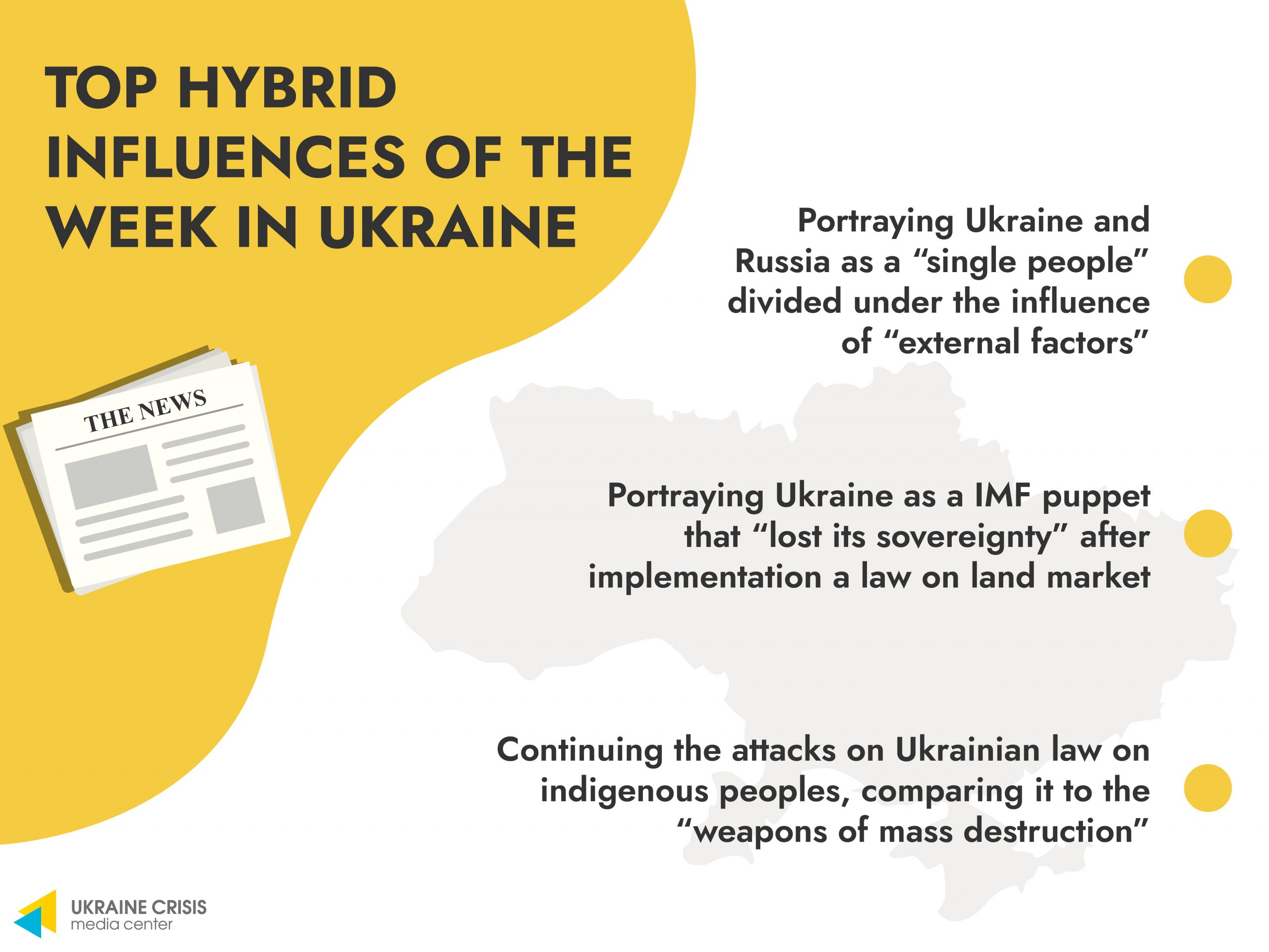These were the main hybrid influences of the week in Ukraine:
- Vladimir Putin used his nationally televised Q&A to promote false narratives on Ukraine, and the pro-Russian media and other forces have gladly disseminated his nonsense via their channels. One of the claims involves historical revisionism: portraying Ukraine and Russia as “single people” divided under the influence of “external factors”, such as the Polish–Lithuanian Commonwealth, and then Austria-Hungary. The aim is to discredit Ukraine as a nation, to portray it as an artificial formation with no need for sovereignty. This way, the Kremlin attempts to justify Russia’s claims to Ukrainian territories and its aggression.
- As of yesterday, the law on land reform took effect, and the land market has officially been launched. The attacks from the pro-Russian actors ahead of this transformative step in reforming the Ukrainian economy were only natural. They again pushed the “external governance” narrative portraying the implementation of the law as ordered by the IMF. This narrative attempts to undermine the reform process and Ukraine’s relations with its partners, as well as to demonize the Western institutions.
- Another message pushed by Putin in his Q&A and reiterated by pro-Kremlin media in Ukraine was comparing the law on indigenous peoples to the “weapon of mass destruction” targeting Russians, which strengthens the old narrative of the discrimination of Russians in Ukraine. This has nothing to do with reality, as the Russians simply do not fit into the criteria of indigenous peoples: they have their own homeland other than Ukraine. But it does not stop Russian propaganda and pro-Kremlin forces from blaming the Ukrainian government for suppressing the Russian minority, which again aids to justify Russian aggression.



